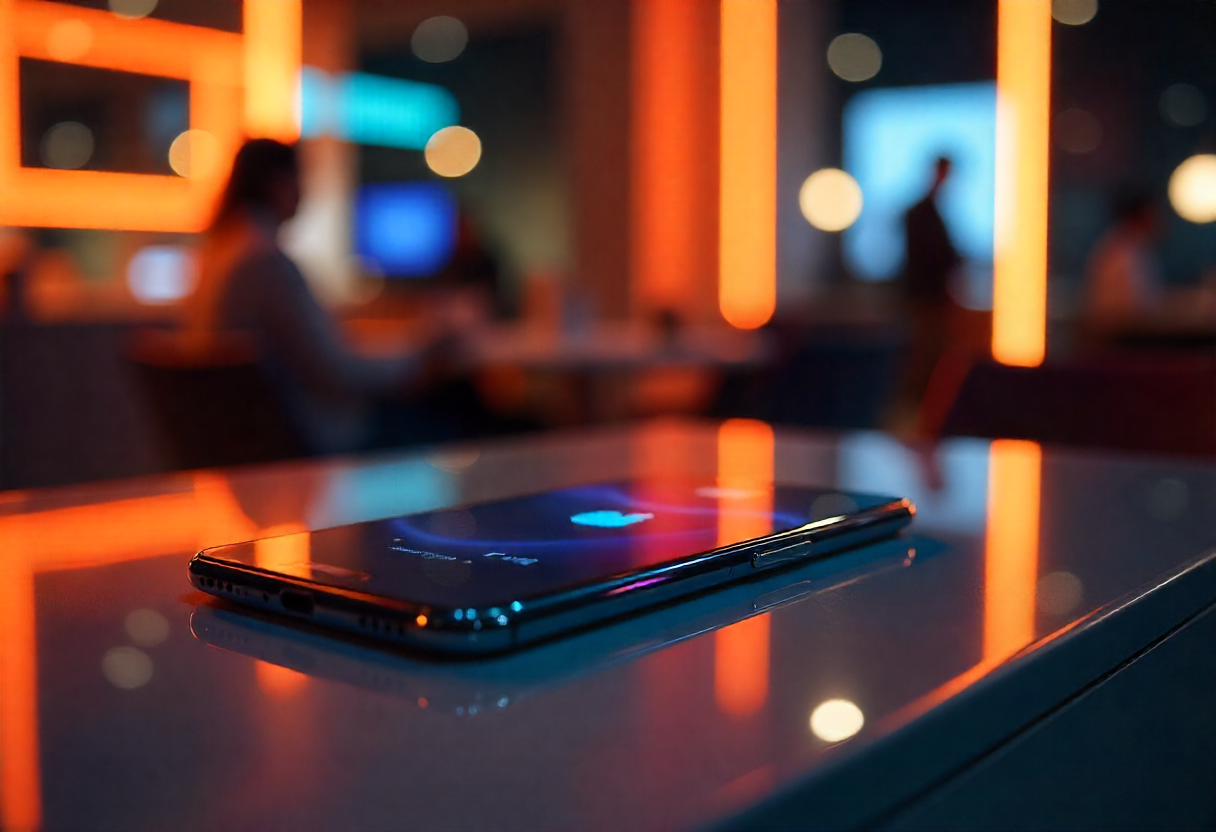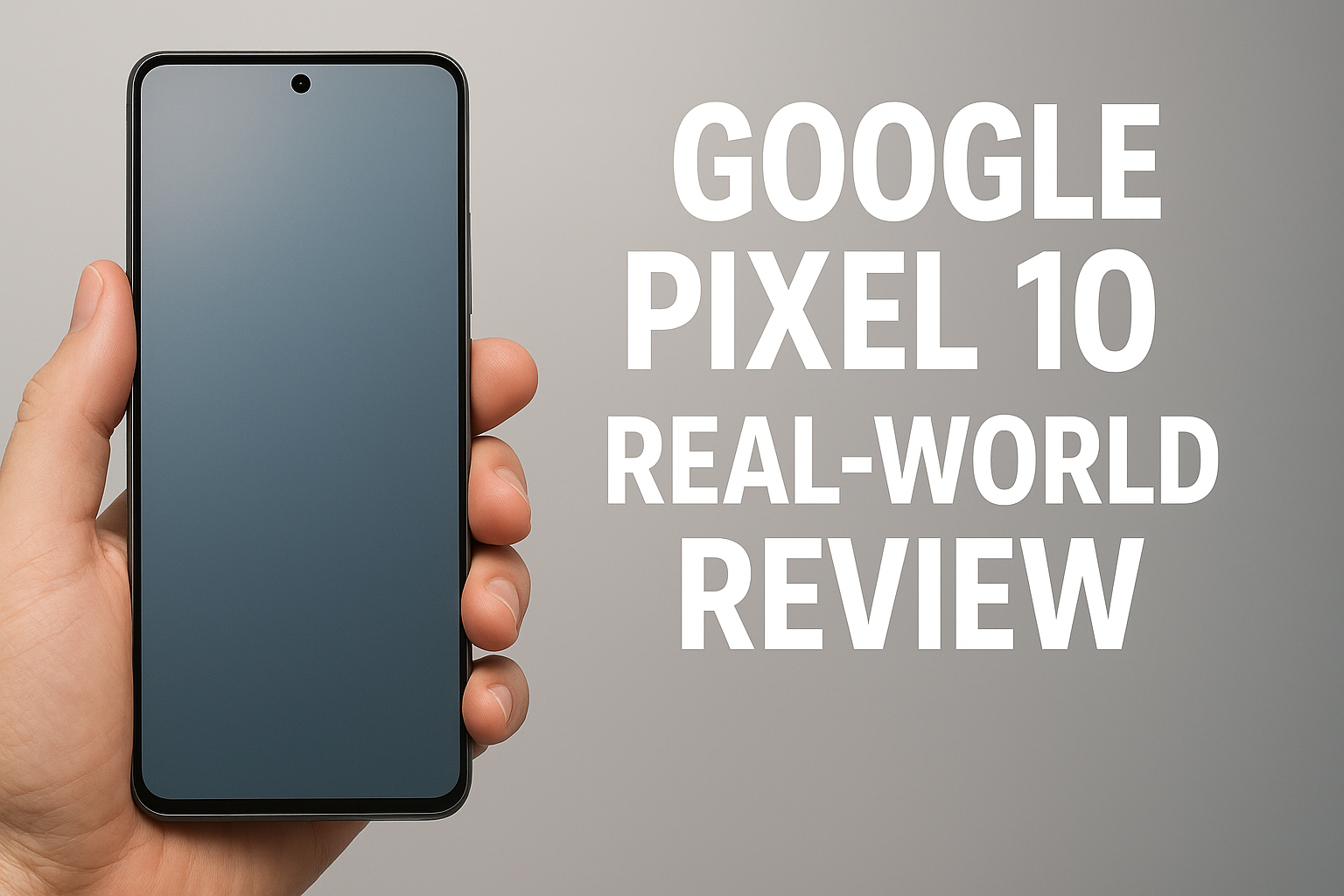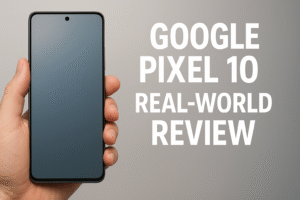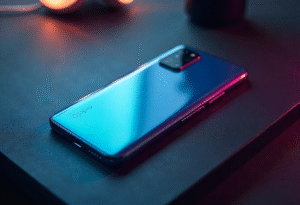Mid-Range Gaming Phones 2026: Ultimate Guide
The mid-range gaming phones market in 2026 offers unprecedented performance at accessible price points, making high-quality mobile gaming available to a broader audience than ever before. With chipsets like the Snapdragon 8s Gen 3 and advanced cooling systems trickling down from flagship devices, today’s mid-range smartphones deliver gaming experiences that were exclusive to premium phones just two years ago. These devices typically range from $300 to $600, striking the perfect balance between performance and affordability for serious mobile gamers.
The current generation of mid-range gaming phones features 120Hz displays, advanced vapor chamber cooling, and processors capable of running demanding titles like BGMI, PUBG Mobile, and Genshin Impact at maximum settings. Leading manufacturers like POCO, OnePlus, RedMagic, and iQOO have revolutionized this segment by incorporating flagship-level gaming features without the premium price tag. Understanding which device offers the best value requires examining performance benchmarks, thermal management, and long-term software support.
What Defines Mid-Range Gaming Phones in 2026
Modern affordable gaming smartphones are characterized by specific performance thresholds and feature sets that separate them from both budget and flagship categories. These devices typically feature processors from the previous generation’s flagship tier or current-generation performance chips, ensuring smooth gameplay across all popular mobile titles while maintaining reasonable pricing.
The defining characteristics of mid-range gaming phones include sustained performance during extended gaming sessions, effective thermal management systems, high refresh rate displays with low touch latency, and battery capacities exceeding 4,500mAh. These specifications ensure that users can enjoy competitive gaming without experiencing the throttling or heating issues common in lower-tier devices.
Performance Benchmarks and Standards
Today’s mid-range gaming phones consistently achieve AnTuTu scores between 800,000 and 1,200,000, with GPU performance sufficient for 120fps gameplay in optimized titles. The latest performance testing shows that devices in this category can maintain stable frame rates even during intensive gaming scenarios that would challenge phones from just two years ago.
Key performance metrics for mid-range gaming phones include:
- Sustained 90-120fps performance in popular battle royale games
- Thermal throttling limited to less than 15% after 30 minutes of gaming
- Touch response times under 40ms for competitive gaming
- Memory configurations starting at 8GB RAM with UFS 3.1 storage
- Display peak brightness exceeding 1,000 nits for outdoor visibility
Top Mid-Range Gaming Phones by Price Category
The budget gaming devices market segments into distinct price tiers, each offering different performance levels and feature sets. Understanding these categories helps buyers identify the best value proposition for their specific gaming needs and budget constraints.
Under $400: Entry-Level Gaming Performance
The POCO F6, priced at $350-379, leads this segment with its Snapdragon 8s Gen 3 processor and 120Hz AMOLED display. Despite its affordable price point, this device delivers flagship-level gaming performance that rivals devices costing twice as much. The phone’s 5,000mAh battery and 90W fast charging ensure extended gaming sessions without significant downtime.
Alternative options in this price range include the POCO X7 Pro and various iQOO Z-series devices, though none match the F6’s comprehensive gaming feature set. These devices typically compromise on display quality or thermal management to achieve lower pricing, making them suitable for casual rather than competitive gaming.
$400-$550: Premium Mid-Range Performance
The OnePlus 12R, priced at $499, represents the sweet spot for serious mobile gamers seeking flagship performance without premium pricing. Its Snapdragon 8 Gen 2 processor, while not the latest generation, provides excellent gaming performance with superior thermal management compared to newer chips running at higher clock speeds.
The RedMagic 10 Air, at $549, offers unique gaming-focused features including shoulder triggers, dedicated cooling systems, and gaming-optimized software. These specialized features make it particularly appealing to competitive gamers who prioritize functionality over aesthetics.
Essential Features for Mobile Gaming Performance
Modern mobile gaming performance depends on several key hardware and software components working together seamlessly. Understanding these elements helps buyers prioritize features based on their gaming preferences and usage patterns.
Display Technology and Gaming
High refresh rate displays have become standard in mid-range gaming phones, with most devices offering 120Hz panels that provide smooth motion and reduced input lag. The quality of these displays varies significantly, with premium mid-range devices featuring LTPO technology that dynamically adjusts refresh rates to conserve battery life.
Touch sampling rates of 480Hz or higher ensure responsive controls during competitive gaming, while peak brightness levels above 1,000 nits maintain visibility in challenging outdoor conditions. Color accuracy and HDR support enhance the visual gaming experience, though these features are less critical for competitive performance.
Thermal Management Systems
Effective cooling solutions separate excellent gaming phones from mediocre ones, as sustained performance depends entirely on managing heat generation during extended play sessions. Leading mid-range gaming phones incorporate multiple cooling technologies including vapor chambers, graphite sheets, and copper heat spreaders.
The most advanced cooling systems maintain processor temperatures below critical thresholds even during hour-long gaming sessions, preventing the performance throttling that ruins competitive gaming experiences. Some devices also include software-based thermal management that adjusts performance parameters based on real-time temperature monitoring.
Processor and Chipset Analysis
The processor landscape for mid-range gaming phones centers around three main chipset categories: Snapdragon 8 Gen 2, Snapdragon 8s Gen 3, and various MediaTek Dimensity options. Each offers different performance characteristics that affect gaming experiences in specific ways.
Snapdragon 8 Gen 2 Performance
Despite being a previous-generation flagship chipset, the Snapdragon 8 Gen 2 remains highly relevant for mobile gaming due to its excellent balance of performance and efficiency. Devices like the OnePlus 12R demonstrate that this processor can handle all current mobile games at maximum settings while maintaining reasonable temperatures and battery consumption.
The Adreno 740 GPU in the 8 Gen 2 delivers consistent performance across gaming scenarios, with particularly strong results in graphically demanding titles like Genshin Impact and Honkai: Star Rail. Benchmark scores typically exceed 1,000,000 in AnTuTu, placing these devices firmly in flagship performance territory.
Snapdragon 8s Gen 3 Advantages
The newer Snapdragon 8s Gen 3, featured in devices like the POCO F6, represents Qualcomm’s attempt to bring flagship performance to more affordable price points. This chipset offers improved GPU performance and enhanced AI capabilities compared to the 8 Gen 2, though real-world gaming differences are often minimal.
Power efficiency improvements in the 8s Gen 3 translate to better battery life during gaming sessions, while the upgraded Adreno 735 GPU provides smoother performance in ray-tracing enabled games. However, some users report that aggressive thermal management in budget devices can limit the chipset’s peak performance potential.
Gaming-Specific Features and Software
Beyond raw hardware performance, successful gaming phones incorporate software optimizations and gaming-specific features that enhance the mobile gaming experience. These elements often differentiate good gaming phones from exceptional ones, providing tangible benefits for serious players.
Gaming Mode Optimizations
Dedicated gaming modes optimize system resources by prioritizing CPU and GPU performance while blocking background applications and notifications. Advanced implementations also adjust network settings, disable automatic brightness adjustments, and provide granular control over performance profiles for different games.
Some manufacturers include additional features like screen recording, performance monitoring, and macro support within their gaming modes. These tools prove particularly valuable for content creators and competitive players who need detailed performance analytics and streaming capabilities.
Shoulder Triggers and Hardware Controls
Physical gaming controls, including shoulder triggers and pressure-sensitive displays, provide competitive advantages in specific game genres. Devices like the RedMagic series incorporate actual physical buttons that can be mapped to touch controls, offering more precise input for shooting and action games.
While not essential for all users, these hardware controls significantly improve the experience for competitive PUBG Mobile and Call of Duty Mobile players. The tactile feedback and reduced finger fatigue during extended play sessions make these features valuable for serious mobile gamers.
Battery Life and Charging Technology
Gaming performance means little without sufficient battery capacity and fast charging technology to support extended play sessions. Mid-range gaming phones typically feature batteries ranging from 4,500mAh to 6,000mAh, with charging speeds between 67W and 120W becoming standard.
Real-world gaming battery life varies significantly based on game types, display settings, and thermal conditions. Graphically intensive games like Genshin Impact can drain batteries in 3-4 hours, while less demanding titles may provide 6-8 hours of continuous gameplay. Fast charging technology becomes crucial for minimizing downtime between gaming sessions.
Power Management and Efficiency
Advanced power management systems optimize battery usage during gaming by dynamically adjusting CPU and GPU frequencies based on game requirements. Some devices include dedicated gaming battery modes that prioritize sustained performance over maximum efficiency, extending playable time during competitive sessions.
Wireless charging, while less common in mid-range devices, provides convenience for casual gaming scenarios. However, the slower charging speeds and heat generation make wired fast charging more practical for serious gaming applications.
Camera Systems in Gaming Phones
While gaming performance takes priority, mid-range gaming phones increasingly offer competent camera systems that appeal to users seeking a well-rounded smartphone experience. The challenge lies in balancing camera quality with the thermal and space requirements of gaming-focused hardware.
Most mid-range gaming phones feature adequate main cameras with 50MP sensors, though secondary cameras often receive less attention. The focus remains on delivering solid photo quality for social media and content creation rather than competing with camera-focused flagships in this price segment.
Build Quality and Design Considerations
Gaming phones face unique design challenges, balancing thermal management requirements with aesthetic appeal and durability. Mid-range devices often compromise on premium materials to achieve aggressive pricing, though build quality generally remains solid across leading manufacturers.
Weight distribution becomes particularly important for gaming phones, as extended play sessions require comfortable ergonomics. Some devices incorporate textured backs or specialized grips to improve handling during intense gaming scenarios, though these design elements may appeal primarily to dedicated gamers rather than mainstream users.
Durability and Protection
Gaming phones typically receive heavy usage, making durability a critical consideration. Most mid-range gaming devices include Gorilla Glass protection and basic water resistance, though full IP ratings are less common in this price segment. The focus on performance often means that some protection features found in mainstream flagships are omitted to control costs.
Software Support and Updates
Long-term software support significantly impacts the value proposition of mid-range gaming phones, as game requirements and optimization continue evolving. Leading manufacturers like OnePlus and Samsung generally provide 2-3 years of major Android updates, while smaller gaming-focused brands may offer shorter support windows.
Custom gaming-focused software can provide significant performance benefits but may also delay security updates and Android version upgrades. Users must balance the immediate gaming benefits of specialized software against longer-term update reliability and security considerations.
Market Trends and Future Outlook
The mid-range gaming phone market continues evolving rapidly, with several trends shaping future device development. Improved chipset efficiency, advanced cooling technologies, and higher refresh rate displays are becoming standard features even in affordable devices.
Artificial intelligence integration promises to enhance gaming experiences through predictive performance optimization, intelligent thermal management, and adaptive display settings. These features, currently limited to flagship devices, will likely become standard in mid-range gaming phones within the next two years.
Competitive Landscape Evolution
Traditional smartphone manufacturers increasingly recognize the gaming market’s importance, leading to improved gaming features across their product lines. This competition benefits consumers by driving innovation and keeping prices competitive while expanding feature availability.
Specialized gaming phone manufacturers like RedMagic and Black Shark continue pushing boundaries with unique features and aggressive pricing, forcing mainstream brands to incorporate gaming-specific elements to remain competitive in this crucial market segment.
Buying Guide and Recommendations
Selecting the ideal mid-range gaming phone requires evaluating individual priorities, gaming preferences, and budget constraints. Competitive gamers should prioritize thermal management and display quality, while casual users may prefer balanced features and longer battery life.
Consider these factors when choosing a mid-range gaming phone:
- Primary game genres and performance requirements
- Display size preferences and outdoor usage needs
- Battery life expectations and charging speed importance
- Camera quality requirements for content creation
- Software update priorities and long-term support
- Physical gaming control preferences and ergonomics
Value Proposition Analysis
The best mid-range gaming phones offer flagship-level gaming performance while making strategic compromises in non-essential areas. Understanding these trade-offs helps buyers identify devices that align with their specific needs without paying for unnecessary premium features.
Price-to-performance ratios vary significantly across manufacturers and regions, making thorough research essential before making purchasing decisions. Consider total cost of ownership, including accessories, extended warranties, and potential resale values when evaluating different options.
Accessories and Ecosystem
Gaming phone accessories can significantly enhance the mobile gaming experience, from cooling fans and controller attachments to specialized cases and stands. Mid-range gaming phones often support a wide range of third-party accessories, though compatibility varies between manufacturers.
External cooling solutions, gaming controllers, and high-quality audio accessories can transform mid-range devices into comprehensive gaming systems. However, the additional cost of these accessories should factor into overall budget considerations when comparing device options.
Frequently Asked Questions
What makes mid-range gaming phones different from regular smartphones in 2026?
Mid-range gaming phones in 2026 feature specialized hardware including advanced cooling systems, high refresh rate displays with low touch latency, gaming-optimized processors from previous flagship generations, and larger batteries with fast charging. They also include dedicated gaming modes, performance monitoring tools, and often physical gaming controls that regular smartphones lack. These devices prioritize sustained performance during extended gaming sessions while maintaining affordable pricing between $300-600.
Which affordable gaming smartphone offers the best value for competitive mobile gaming?
The POCO F6 at $350-379 currently offers exceptional value for competitive gaming with its Snapdragon 8s Gen 3 processor, 120Hz AMOLED display, and effective thermal management. For users with slightly higher budgets, the OnePlus 12R at $499 provides superior build quality and longer software support. Both devices can maintain 90-120fps in popular competitive titles like BGMI and PUBG Mobile while offering excellent battery life and fast charging capabilities.
How important is thermal management in budget gaming devices, and what should buyers look for?
Thermal management is crucial in budget gaming devices as sustained performance depends entirely on controlling heat generation during extended play. Look for phones with vapor chamber cooling, multiple heat dissipation layers, and software-based thermal optimization. Devices that can maintain stable performance for over 30 minutes without significant throttling are essential for competitive gaming. Reviews and thermal testing data should show temperature increases limited to 10-15 degrees during intensive gaming sessions for optimal performance consistency.
The mid-range gaming phone market in 2026 represents an exceptional opportunity for mobile gamers to access flagship-level performance at accessible price points. With devices like the POCO F6, OnePlus 12R, and RedMagic 10 Air leading the segment, buyers can enjoy premium gaming experiences without the premium price tags associated with flagship devices. As competition intensifies and technology advances, the gap between mid-range and flagship gaming performance continues narrowing, making these devices increasingly attractive for serious mobile gamers seeking the best value proposition in the market.














Post Comment